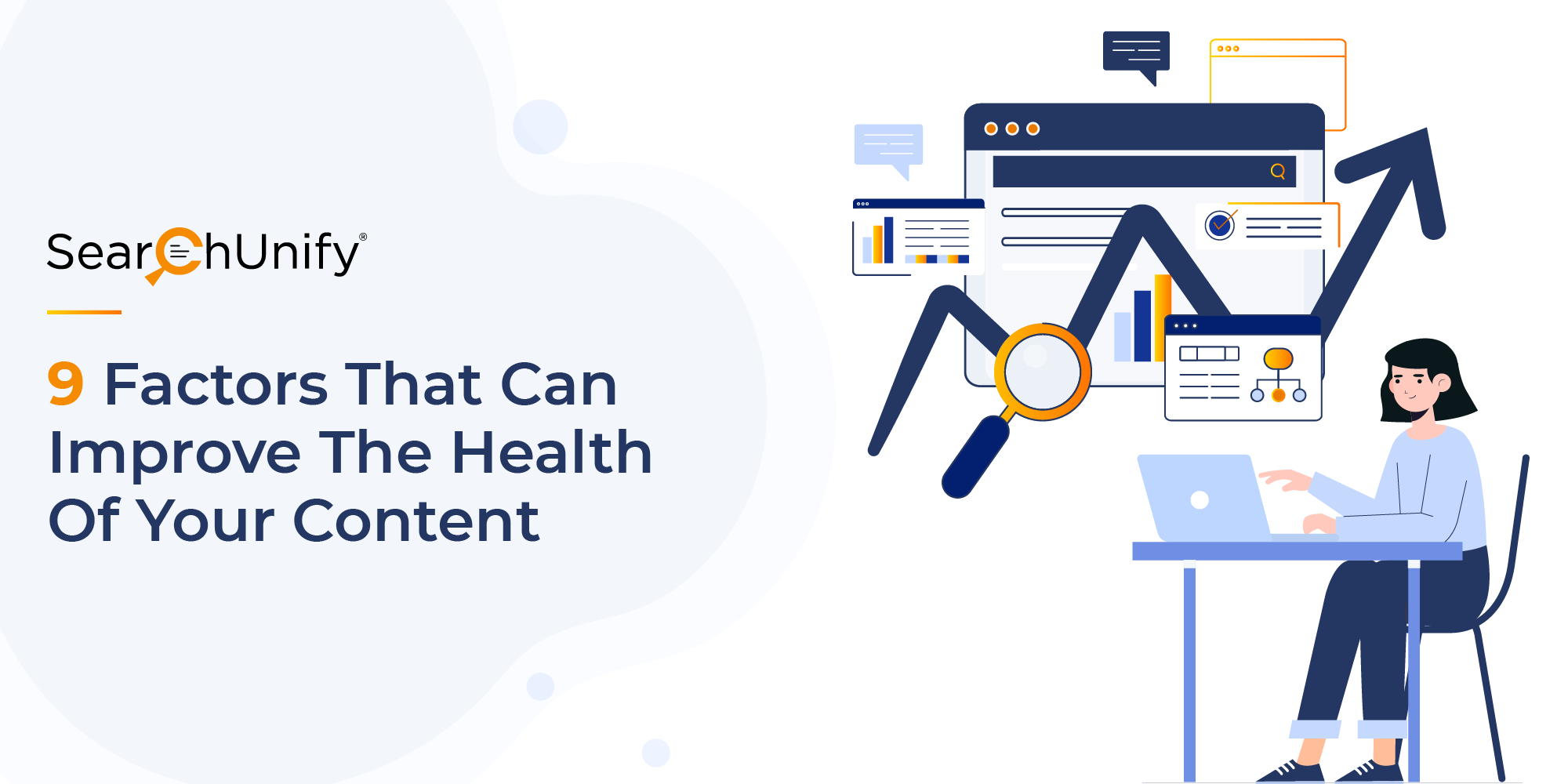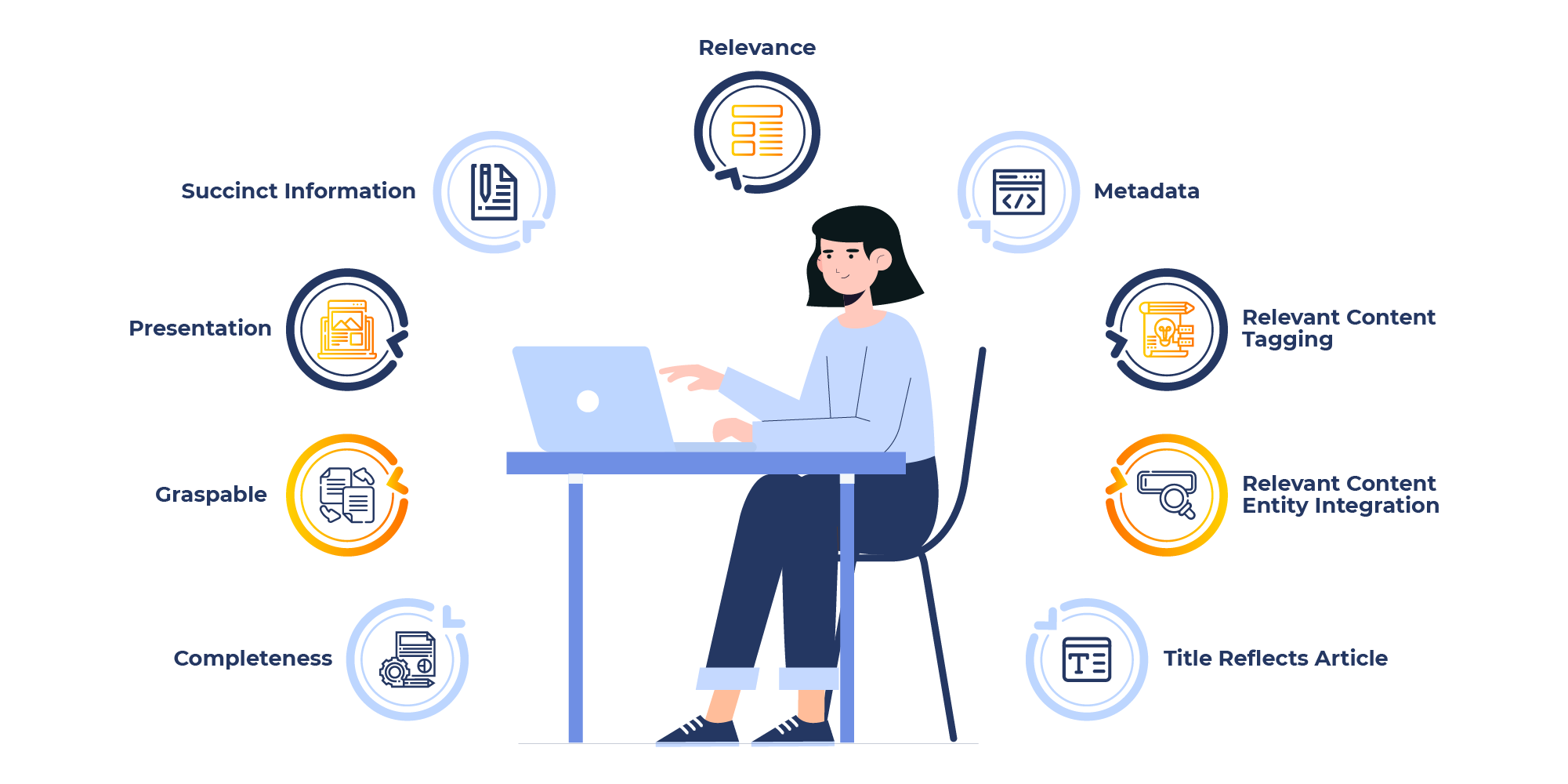
In one of our previous blog posts, we walked you through the factors to consider before investing in an enterprise search engine. In case you missed it, you can find it right here.
But the success of this investment depends on a completely different set of variables. One of them is the quality or health of your content. An enterprise search engine can crawl and look for what you have, but your users need to associate some value with it.
A document may appear useful, but the utility is tested by how it helps the seeker. The content quality, for that matter, holds the utmost importance. Like SERPs (Search Engine Results Page) lists the relevant references based on quality and value for the user. So, the pages that offer maximum value to the users will be frequently visited and secure better ranking on the results page.
What is Content Health in Enterprise Search?
In the case of enterprise search, content quality is a combination of numerous factors like clarity, accuracy, source of information, author, etc. Would you rely on the numbers or facts presented on a Wikipedia page (that anyone can freely edit) or prefer the numbers and facts published by Gartner in a well-researched report? You picked Gartner, right? So did we.
Enterprise search engines give you the ability to redefine quality standards. Put simply, you can tweak the quality parameters as per your needs. These parameters include the user’s role, designation, creation date, etc., that help optimize the search experience.
So you might want to rule out any results that do not have a defined author or set a date range in which you are looking for the results. It’s all in your hands.
Attributes Affecting Content Quality & Discovery
If you want to create valuable content, ensure that it checks off a couple of parameters. Not only do they enable easy health checks to keep your knowledge base in pristine condition but also ensure all-around consistency.

1. Succinct information
Your content should convey the message in a way that eliminates the need for further research. It needs to enable users to spring into action and implement what they have learned. This, by all means, should be the aim of your content.
The benefits are manifold. Let me explain it with an example. Say Ruth bought a new phone and was unable to understand one of its features. She searched for help and found an article that seemed to address her doubt. And voila, it hit the nail right on the head! Now, Ruth wouldn’t just save the link for future reference. She might go on and share it with her friends who use the same device.
2. Presentation
People only take 50 milliseconds (0.05 seconds) to form an opinion about your page.
How you choose to display the information on the page as a content creator might be your choice. But one thing to keep in mind while you do that is that your audience can drift away if they experience unwanted commotion. Hence, the presentation must be precise, accurate, and straightforward. No user wants to read long stories when they can have facts in their hands on another page without fidgeting through paragraphs or tables.
Have you not done that yourself? Well, Ruth has! While she was looking online for her query, she happened to stumble upon a web page that could have answered her. But because it had a lot going on, she couldn’t read through it as quickly. As a result, she jumped to another link. And nobody can’t blame her for that.
3. Graspable
How good your content is at resolving queries depends on how easily the users comprehend it. You may use the most impressive phrases, present a lot of facts, and exhaust the thesaurus, but if the reader cannot decipher what you said, then it’s all in vain.
What would our humble Ruth do if she finds herself in a situation where she couldn’t understand the meaning despite re-reading the sentences multiple times? Perhaps close the tab. Would you do anything else? Well, all that glitters is not gold.
4. Completeness
Incomplete sentences or information are a nightmare for readers. If your content forces them to run another search (which they do not have immediate access to), you have repelled the reader for good. A quality content piece does not leave loose ends. So, how can you resolve this? Use annotations wherever needed!
Nobody likes to spend even seconds on a page where they have to run another search query. The completeness of the piece glues the user to it and increases its value. What if the document Ruth found wasn’t complete? She would have closed the tab and created a ticket, let alone share it with friends.
5. Relevance
The audience prefers documents that hold relevance in time and allow users to act upon them. Relevance in time would mean that the available information is fresh. If your piece doesn’t help the reader to conclude, it lacks relevance.
Additionally, we tend to use statistics to back our words. While that is a good practice, it’s integral to use the latest data. For instance, if someone quotes a 2019 report when the one for 2020 is out, they’re sharing outdated information. It may reflect poorly on the brand.
Just imagine Ruth’s plight if she wanted to set up her phone but could only find articles on setting up accounts and connecting to the internet.
ALSO READ: The Complete Guide to Enterprise Search Relevance
6. Metadata
Simply put, metadata is data about data. It helps to organize, understand, and find data. It helps Ruth quickly decide if the article contains what she is looking for.

The title, description, as well as site links, are all part of the metadata. When you execute a search query, the engine scans metadata and delivers the closest matches as results.
So, you might want to use the keywords well for the search engine to read your document and reflect it on the results page. The metadata can be written keeping in mind your defined standards like objectives or audience.
7. Content Tags
Tagging helps to classify your content. If you have labeled or tagged the documents well, the enterprise search engine will be able to crawl them with ease. The crawler analyzes the tags to determine the subject and category. This helps the search engine to pick the right documents and display them on the results page.
It is similar to adding bookmarks to your textbook. Not only does it neatly segregate the content but also create shortcuts so that people like Ruth can quickly access useful information. So, take your tags seriously!
8. Content Entity Integration
There might be certain points that you link in your document for the reader to refer to if they need to. These are called entities. Entities can be names of organizations, places, numbers, dates, etc.
For example, if I mention SearchUnify here, it should be hyperlinked to a relevant page or document. Get the drift? It functions as a reference for Ruth and ensures she doesn’t feel confused upon seeing a new entity.
9. Title Reflects Article
The title is the first impression you are putting on the reader. A strong heading will not only build curiosity in the readers but also earns you limelight. It acts as one of the most important tags that the search engines can use to crawl.

You must have noticed that even on public search engines, the headings with the right set of keywords show up at the top. And these are the pages that you tend to jump to first. That is why your title must do justice to the subject of your content piece.
Without a good title, Ruth and several other customers might scroll past perfectly framed articles and develop a negative image of the brand.
The Bottom Line
We just escorted you through some of the crucial points that can help you to maintain healthy content across your organization’s repositories. Not only can healthy content help you garner the reader’s attention, it also helps them to associate value to it.
If you’d like to get your knowledge management game right, we’d recommend going through this ebook. It talks about various KM challenges and how to overcome them with AI.











